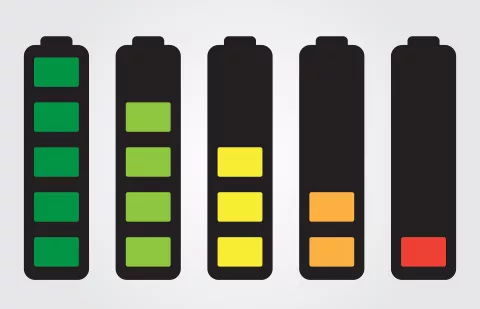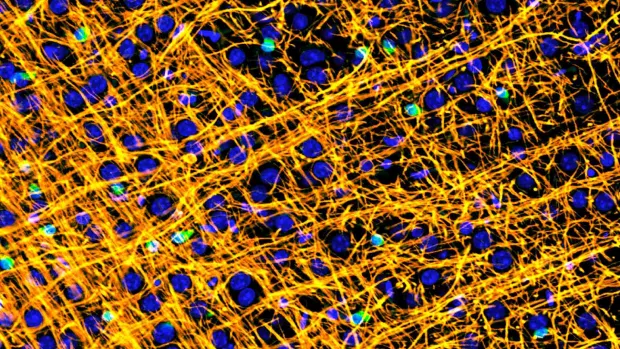
Diabetes drug gives nerves an energy boost and protects them from damage
New research, part funded by us, suggests the diabetes drug pioglitazone could be another piece in the puzzle of stopping MS, through its ability to protect nerves from damage.
An energy boost
Normally the protective myelin coating around our nerves allows messages to be sent quickly around the body. But in MS, myelin is damaged, which makes nerves vulnerable to further damage and causes disability over time. We also know that in MS, nerves carry messages less efficiently. They need more energy to compensate for this.
For the first time, researchers at the University of Edinburgh have shown nerves have the natural ability to boost their energy supplies after being damaged. They do this by moving mitochondria (the energy powerhouse of cells) to the damaged part of the nerve fibre. The researchers called this process ARMD (axonal response of mitochondria to demyelination).
ARMD alone isn’t able to provide enough energy to meet the increased energy demand caused by myelin damage. But, excitingly, researchers also discovered that pioglitazone, an existing diabetes drug, can further increase the number of mitochondria. This produces more energy and protects the nerve fibres in mice from additional damage.
Protecting nerves
Dr Don Mahad, from the MS Society Edinburgh Centre for MS Research, said: “Although our understanding of MS has vastly improved over the last few decades, new therapies still do not protect nerve fibres. Such protection is the Holy Grail in MS treatment – not only for the relapsing form of MS, which has various options available, but for progressive forms too, where treatment continues to lag behind.
“Our discovery shows that nerves respond to myelin damage by increasing the movement of energy producing mitochondria to the area of damage – a response which we term ‘ARMD’. Remarkably, we were able to enhance ARMD and protect these vulnerable nerves using the readily available diabetes drug pioglitazone. We believe this is an incredibly important discovery, which could finally bridge the gap between myelin damage and myelin repair.”
What does this mean for people with MS?
Right now, there are now over a dozen effective treatments for people with relapsing MS – but these only address damage that is caused by the immune system. In order to truly stop MS and find treatments for everyone, we need to find ways to both protect nerves from further injury and repair damaged myelin.
This research was done in mice and in cells grown in a dish. Pioglitazone is also being tested in clinical trial of people with progressive MS in the US (called TRAP-MS) to see whether it can target the immune system attacks on myelin.
Dr Emma Gray, our Assistant Director of Research said: “This represents another important stride towards our goal of stopping MS – and we believe that MS treatment could in the near future look completely different. People with MS will be prescribed a combination of therapies that work on every aspect of the condition: stopping immune attacks and relapses, protecting nerves from damage, and regenerating lost myelin. It will mean no-one needs to worry about their MS getting worse.
“Currently, there are no effective neuroprotective therapies available for MS, but Dr Mahad’s research demonstrates we are getting closer – and finding treatments for everyone with MS is now a very real prospect.”




